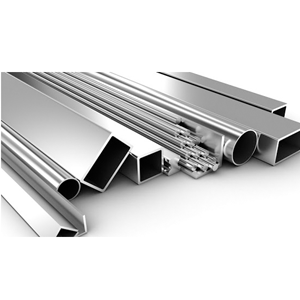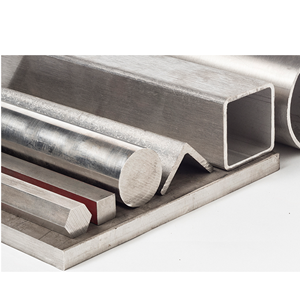Material Notes
Type 304 stainless steel manufacturer is a T 300 Series Stainless Steel austenitic. It has a minimum of 18% chromium and 8% nickel, combined with a maximum of 0.08% carbon. It is defined as a Chromium-Nickel austenitic alloy.
Grade 304 is the standard “18/8” stainless that you will probably see in your pans and cookery tools.
These are some of its characteristics:
- Forming and welding properties
- Corrosion/ oxidation resistance thanks to the chromium content
- Deep drawing quality – Excellent toughness, even down to cryogenic temperatures which are defined as very low temperatures
- Low temperature properties responding well to hardening by cold working
- Ease of cleaning, ease of fabrication, beauty of appearance
Grade 304L is the low carbon version of 304. It does not require post-weld annealing and so is extensively used in heavy gauge components (over about 6mm).
Grade 304H with its higher carbon content finds application at elevated temperatures.
Applications:
It is used for a wide variety of home and commercial applications, this is one of the most familiar and most frequently used alloys in the stainless steel family.
Typical applications include tanks and containers for a large variety of liquids and solids:


Food Industry
Food processing equipment, particularly in beer brewing, milk processing & wine making. For example it is highly suitable and applied in dairy equipment such as milking machines, containers, homogenizers, sterilizers, and storage and hauling tanks, including piping, valves, milk trucks and railroad cars.
Very common in the brewing industry where it is used in pipelines, yeast pans, fermentation vats, storage and railway cars, etc. The citrus and fruit juice industry also uses Type 304 for all their handling, crushing, preparation, storage and hauling equipment.
- Domestic tools industry
Because of its ability to withstand the corrosive action of various acids found in fruits, meats, milk, and vegetables, Type 304 is used for sinks, tabletops, coffee urns, stoves, refrigerators, milk and cream dispensers, and steam tables. It is also used in numerous other utensils such as cooking appliances, pots, pans, and flatware.
- Architectural panelling, railings & trim
– Chemical containers, including for transport - Heat Exchangers
- Woven or welded screens for mining, quarrying & water filtration
- Dyeing industry
- In the marine environment, because of it slightly higher strength and wear resistance than type 316 it is also used for nuts, bolts, screws, and other fasteners.
Chemistry % by Weight
| Element | ||||
| Type 302 | Type 304 | Type 304L | Type 305 | |
| Fe | 64.99-74% | |||
| Cr | 17% | 18% | 18% | 17% |
| Ni | 8% | 8% | 8% | 10.50% |
| Mn | 2% | 2% | 2% | 2% |
| N | 0.10% | 0.10% | 0.10% | – |
| S | 0.03% | 0.03% | 0.03% | 0.03% |
| C | 0.15% | 0.08% | 0.03% | 0.12% |
| Si | 0.75% | 0.75% | 0.75% | 0.75% |
| P | 0.045% | 0.045% | 0.045% | 0.045% |
Possible Alternative Grades
Possible alternative grades to 304 grade stainless steel:
- Grade 301L: It is applicable for higher work hardening rate grade.
- It could be required for certain roll formed or stretch formed components.
- Grade 302HQ: Lower work hardening rate grade. It could be needed for cold forging of screws, bolts and rivets.
- Grade 303: Higher mach inability needed; lower corrosion resistance; acceptable formability and weld ability.
- Grade 316: Used when higher resistance to pitting and crevice corrosion is required, also in chloride environments
- Grade 321: Better resistance to temperatures of around 600-900°C. It has higher hot strength.
- Grade 3CR12: It has lower cost; reduced corrosion resistance and resulting discoloration are acceptable.
- Grade 430: It has lower cost; reduced corrosion resistance and fabrication characteristics are acceptable.
| Properties | ||
| Properties | Value | Comment |
| Physical Properties | ||
| Density | 8.03 g/cc | |
| Mechanical properties | ||
| Hardness, Rockwell B | 82 | |
| Tensile Strength, Ultimate | 621 Mpa (=90100psi) | |
| Tensile Strength, Yield | 290 Mpa (=42100psi) | 0.2% YS |
| Elongation at Break | 55% | in 2 inches |
| Modulus of Elasticity | 193 Gpa | tension |
| Modulus of Elasticity | 78 Gpa | torsion |
| Electrical properties | ||
| Electrical Resistivity | 0.000116 ohm-cm | 659 °C |
| Electrical Resistivity | 7.2e-005 ohm-cm | |
| Magnetic permeability | Max 1.02 | H = 200 Oversteps, Annealed |
| Thermal properties | ||
| CTE, linear 20°C | 16.9 µm/m-°C | 0 to 100°C |
| CTE, linear 20°C | 18.7 µm/m-°C | to 649°C |
| Heat Capacity | 0.5 J/g-°C | 0°C to 100° |
| Thermal Conductivity | 16.2 W/m-K | 100°C |
| Thermal Conductivity | 21.4 W/m-K | 500°C |
| Processing properties | ||
| Melt temperature | 1371- 1399 °C | |
Grade 304 stainless steel Manufacturer is generally regarded as the most common austenitic stainless steel. It contains high nickel content that is typically between 8 and 10.5 percent by weight and a high amount of chromium at approximately 18 to 20 percent by weight. Other major alloying elements include manganese, silicon, and carbon. The remainder of the chemical composition is primarily iron.
The high amounts of chromium and nickel give 304 stainless steel excellent corrosion resistances. Common applications of 304 stainless steel include:
- Appliances such as refrigerators and dishwashers
- Commercial food processing equipment
- Fasteners
- Piping
- Heat exchangers
Structures in environments that would corrode standard carbon steel.


